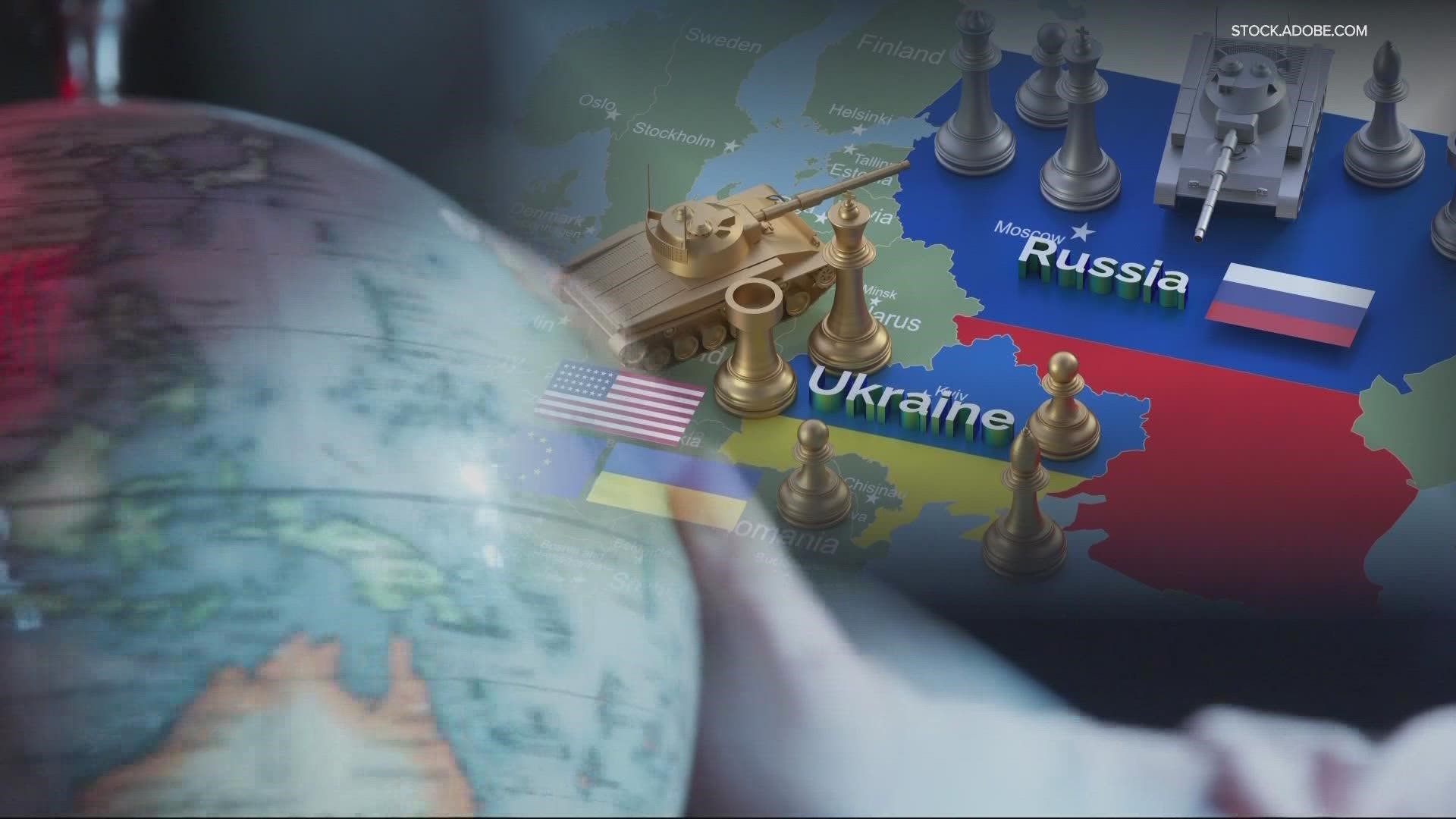PORTLAND, Ore. — The information we’re learning everyday about the war in Ukraine is difficult for many adults to take in. The images we are seeing out of Ukraine are heart wrenching. Families are being pulled apart and communities are being destroyed by war.
But how should adults explain what’s happening in Ukraine to kids in an age-appropriate way?
KGW spoke to Elizabeth Epping, owner and director of Woodward Montessori in Southeast Portland, to get some answers.
“They hear everything. Even things we don’t feel like, they’re hearing. They hear it. So it’s best to talk about it right away so they know,” said Epping.
She recommends explaining the situation in a way kids would understand.
“I took out the big globe and said, ‘Here’s Portland. We went and found where Russia was and I was like, ‘Look how big Russia is and […] I showed them where Ukraine was,” Epping said.
She used terms the kids would be familiar with and described Russia as a bully.
“I said the Ukraine, they used their words. They told them [Russia], ‘no.’ But Russia wanted their land,” said Epping.
She spearheaded a fundraiser to help people in Ukraine and explained the best way to handle a bully if they don’t stop, is to try to get away.
“We’re raising funds for the people who want to get away for them [Russia] to have money to go to a safe place,” Epping said.
Salem-Keizer school psychologist Mary Sperling said there are a number of things parents can do.
“First of all I would let children’s questions tell you what they need to know. So, they may be concerned about things that are different than the things you’re concerned about,” said Sperling.
Sperling said especially for younger kids, avoid unnecessary or frightening details and focus on giving simple information and reassurance.
“Make sure to clarify any misconceptions or misinformation because sometimes children will kind of fill in the details they don’t know with very scary things,” Sperling said.
RELATED: No, the video of Ukrainian President Zelenskyy urging surrender isn’t real. It’s a deepfake

